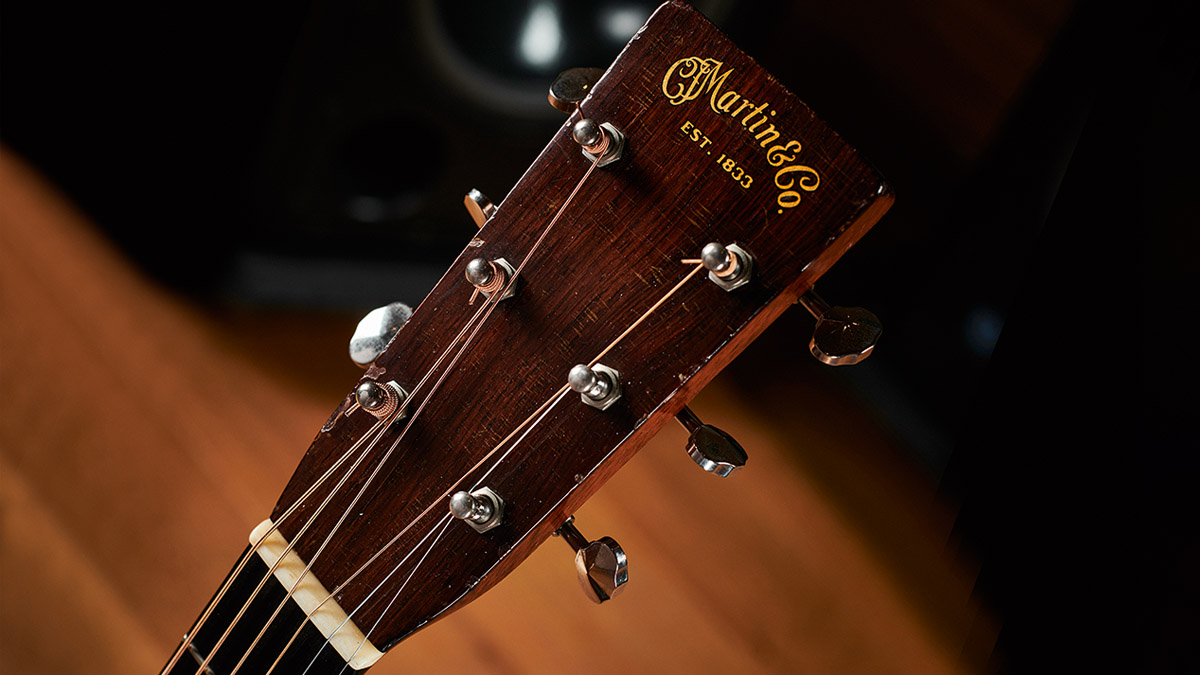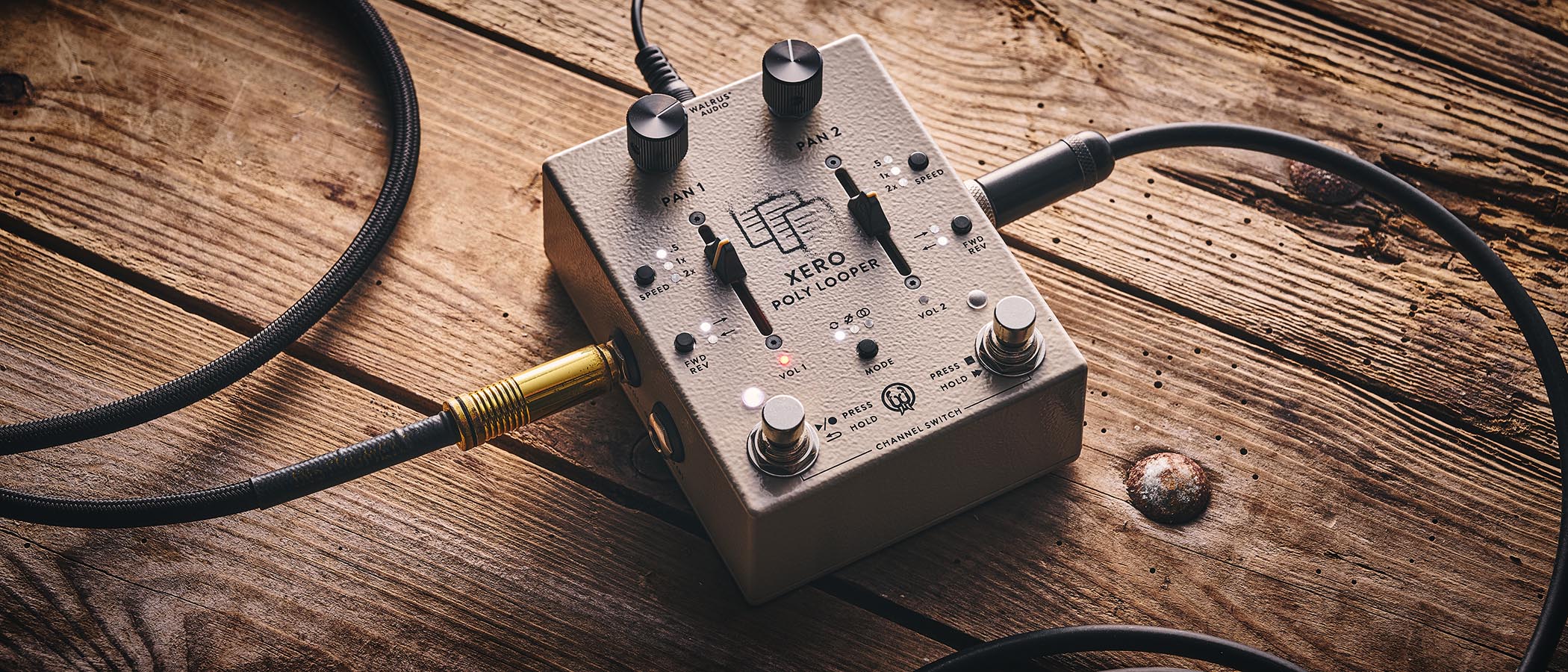The birth and evolution of the Martin D-18 Dreadnought – the archetypical acoustic guitar
A true workhorse of the Martin line, this iconic guitar is a zenith of flat-top design

The instrument you see here – Mark Knopfler’s 1935 Martin D-18 – represents an apex of acoustic guitar building. Despite the vast technological advances of the post-war period, many would argue this perennially popular design has never been bettered.
One of the most imitated flat-top blueprints in history, Martin’s Dreadnought (originally spelled Dreadnaught) is the archetypal American acoustic guitar. But it would be a mistake to think that it suddenly appeared from out of nowhere; there was an entire century’s worth of innovation leading up to its arrival.
If you look at a Martin headstock from the past 90 years, you’ll probably see a decal that reads ‘CF Martin & Co Est. 1833’. It was 1932 when the firm began using this transfer – nigh on 100 years after company founder Christian Frederick Martin Sr arrived in New York City in November 1833. Having spent two months on an epic voyage from Germany, the Johann Stauffer-trained luthier set up shop and was producing guitars within months.
During the 1830s, he started moving away from building maple‑bodied, figure-of-eight guitars with ornate/moustache bridges and Strat-like Stauffer headstocks in favour of Spanish-style rosewood instruments with smaller upper bouts and rectangular bridges and headstocks. At the same time, he began experimenting with X-bracing and in 1843 produced the first ever X-braced Martin for famed Spanish guitarist Madame de Goñi. Nearly 180 years later, this style of bracing is still in use.

Madame de Goñi’s X-braced guitar provided noticeable improvements with respect to tone and volume, and dealers soon began asking for “the de Goñi model”. Hers was a size 1 guitar. It was the largest Martin available at the time, measuring 12 ¾ inches in width.
Seeking to further increase volume and low-end by way of expanding body size, Martin then introduced the 13 ½-inch wide 0 size, followed by the 14 1/8-inch wide 00 size in 1854 and 1858, respectively. It was also during the 1850s that the first style 18 guitars appeared. These instruments were originally constructed using rosewood and cost $18 wholesale (hence the name/designation).
The next important steps in acoustic guitar evolution leading up to the Dreadnought came in 1902. Not only did Martin’s first 15-inch wide 000 size guitar, a 000-21, arrive that year, but so too did the company’s first steel-string model, a special order 00-21.
All the latest guitar news, interviews, lessons, reviews, deals and more, direct to your inbox!
While Hawaiian music grew in popularity, Martin began offering steel-string guitars as a regular option in the 1910s. Its first steel-string only model, the 2-17, appeared in 1922 and by the late 1920s, steel strings, rather than gut strings, were the norm.
During this transitional period, Martin built its first ever Dreadnought for Hawaiian musician Mekia Kealakai in 1916. Although the firm began producing Dreadnoughts exclusively for retailers Ditson that year, Martin started branding the large 15 5/8-inch wide D models under its own name in 1931 after the Ditson company folded.
Finally, in 1934, Martin changed the Dreadnought from a 12- to 14-fret neck design, following the introduction of its first 14-fret flat-top, the OM-28, in 1929. Now, with its century-long evolution complete, the Martin Dreadnought had at last achieved its iconic form.
The Evolution of the Martin D-18
- 1850s: First 18 Series instruments; rosewood back & sides; spruce top
- 1916: Mekia Kealakai custom Dreadnought; first production Dreadnoughts (Ditson 111 model)
- 1917: 18 Series changes from rosewood to mahogany back & sides
- 1923: Steel strings standard for 18 Series
- 1931: First Martin-branded Dreadnoughts (D-1/D-18 and D-2/D-28); 12-fret necks
- 1934: Change from 12- to 14-fret necks
- 1946: Change from ebony to rosewood fretboard & bridge; Sitka spruce replaces Adirondack spruce
- 1969: East Indian rosewood replaces Brazilian rosewood
- Mid-’80s: Adjustable truss rod
- 2012: Return to ebony fretboard & bridge
Rod Brakes is a music journalist with an expertise in guitars. Having spent many years at the coalface as a guitar dealer and tech, Rod's more recent work as a writer covering artists, industry pros and gear includes contributions for leading publications and websites such as Guitarist, Total Guitar, Guitar World, Guitar Player and MusicRadar in addition to specialist music books, blogs and social media. He is also a lifelong musician.


